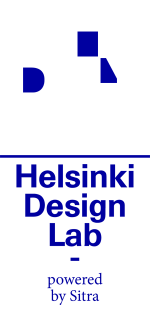What is strategic design?
Video introduction
Traditional definitions of design often focus on creating discrete solutions—be it a product, a building, or a service. Strategic design applies some of the principles of traditional design to "big picture" systemic challenges like health care, education, and climate change. It redefines how problems are approached, identifies opportunities for action, and helps deliver more complete and resilient solutions. Strategic design is about crafting decision-making.
This works best when design is integrated into the DNA of organizations, creating new opportunities for designers with a strategic aptitude to migrate from studios and ateliers to integrated positions, embedded within organizations and governments.
Helsinki Design Lab seeks to expand the practice of design beyond of the realm of cultural affairs. Although many of us have backgrounds in architecture or other fields of traditional design, HDL's work is focused on honing the skill set and mindset of the designer to help solve the challenges faced by the interdependent world.
We believe the strategic designer to have three core competencies:
—
Integration
Because key decision makers sometimes only see the parts rather than the whole of a problem, they may be blind sided by the unintended consequences of their choices. The naturally integrative approach of design helps illuminate the complex web of relationships— between people, organizations, and things—to provide a holistic point of view.
By working across different areas of expertise, strategic design outlines the “architecture of the problem,” highlighting key opportunities for improvement in all aspects and outcomes of a problem.
—
Visualization
The switch from Roman to Arabic numerals allowed the West to handle numerical complexity in an unprecedented manner, causing a profound transformation of civilization.
Today, the challenges we face have reached a new level of complexity and uncertainty, for which spreadsheets and other familiar analytical tools are insufficient.
Fluent in visual representation, the strategic designer uses this skill as an important and iterative means of communicating complex, even contradictory, relationships—which would be difficult or impossible to explain in text and numbers alone.

Stewardship
Good ideas are easy to come by: implementing the right ones is not. In recent years, the emphasis on “design thinking” has powerfully demonstrated the value of applying creativity in a business context.
But successful design is not only about creative thinking. It also involves implementation and ensuring that key ideas maintain their integrity during that process. Designers must be involved over the duration of change processes, providing constant expertise and feedback to identify, test, and deliver durable solutions.
—
